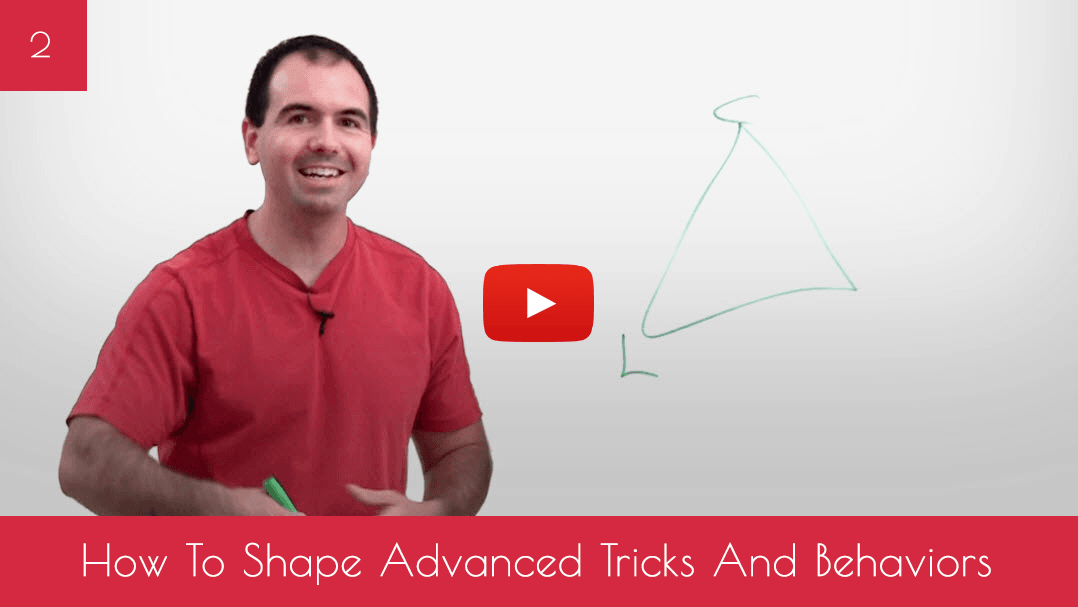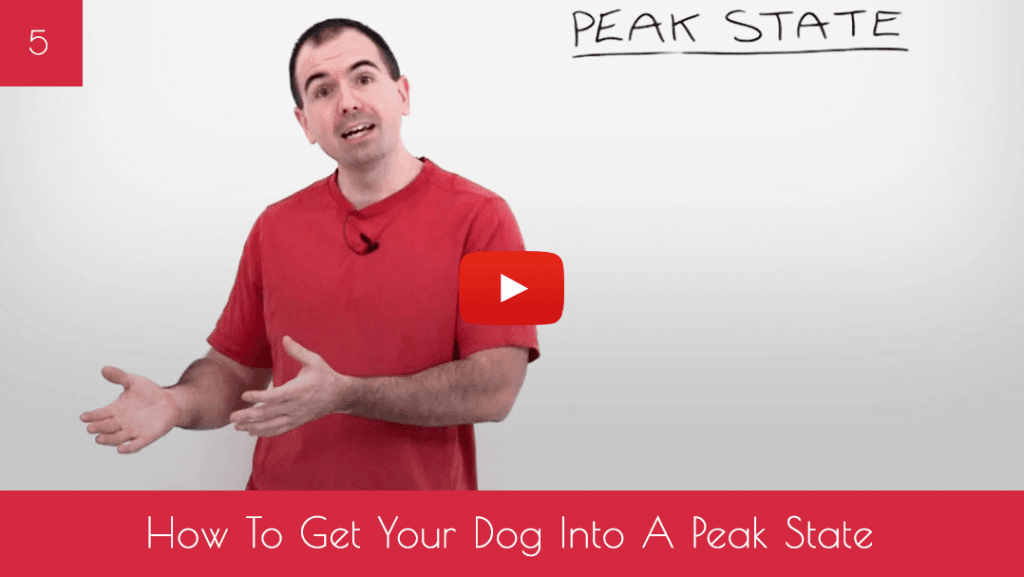Where would you like me to send your FREE 5-part video series?
Almost there!
Please complete the form below and we'll send it to your inbox.
We respect your privacy!
You may unsubscribe from our mailing list at ANY time.





Hi Jean and thank you for your very informative and helpful videos and tips. I very much enjoy watching them and learning from them.
Take care 🙂
It is my pleasure, glad that you enjoy them! 🙂
YES, YES, YES!!!!
In our culture of instant gratification we tend to forget that our dogs are – mere dogs!
They normally try their very best to please us, WE need to understand that they move as fast as they can. Hiking rule applies – move only as fast as the slowest hiker (or dog) can sustain….
Also, different approaches work for different dogs. If you have ever tried to train an intelligent Mini Schnauzer with a formidable stubborn streak and mind of her own, you learn to be creative and think out of the box! Your reward will be an AMAZING dog!
Like the way you get the message across – keep it up!
Thank you! I like your analogy about moving only as fast as the slowest hiker. 🙂
Hi Jean
Many thanks for the videos they are fabulous. It’s great to see Onyx in action too. I also own Siberian Huskies and Alaskan Malamutes and many people believe that it’s not possible to get them to do tricks and obedience because they are too independent and difficult to train. I love to work with my dogs.
Look forward to more of your videos.
Ruth
Thank you very much for the kind words Ruth. I believe that any breed of dog can be trained, sure some dogs will give you more of a challenge but that’s the art training. 🙂
This was super helpful to reinforce what I have been doing with my trainer…reminds me of all the necessary components!
Thank you
You are very welcome! 🙂
I absolutely LOVE your videos!!! I love the idea of positive reinforcement training! I’m not sure if you have done a video of this in the past (if so may I please have the link) but i was wondering if you could do a video of click training? And in it can you talk about common things (good or bad) that you may come across? I am currently reading in a book how to do it, but I find that I learn better when I see a video. When I try to click train my dog, I read that I’m supposed to randomly click and treat throughout the day, about 30 times a day, for about a week.. but the instant I click and treat, or even before I can click and treat, he is in my lap drooling and mooching for the treat. He is very food motivated, which is good, but I’m not sure if that’s a normal reaction. I hope you make the video! And thank you for making such wonderful videos 🙂
Hi Samantha,
Thank you very much for the kind comments. I unfortunately have not made a video specifically covering clicker training, but I may in the very near future.
Conditioning your dog to the clicker is a 2-step process. First, you must teach your dog that the sound of the clicker (when you click) means getting a treat. Stand tall with your clicker behind your back, click it and immediately give your dog a treat. Make sure that you give your treat immediately AFTER the click and not at the same time. You’ll be able to tell when your dog has mastered this by seeing a small “knee-jerk” reaction whenever you click your clicker.
Once your dog has been conditioned to the clicker, you must then teach him that his behavior influences the clicker. So begin with very simple behaviors (preferably captured behaviors) like sitting or nose touches. Pick one and wait for your dog to do that exact behavior. Click at the exact same time that your dog does that behavior and immediately give him a treat.
Thank you very much, I cant wait to get home from work and try it 🙂
I watched your video on teaching your dog to turn in a circle and decided to try it with my three dogs. My Sheltie picked it up right away. She is very treat motivated and also spins naturally when she is excited. It only took about 5 minutes for her to get the hand motion down pat, and now we are working on adding “circle” to her vocabulary.
I would love to train my dogs to not go haywire when someone comes to the door or the doorbell rings. They bark and jump at the door, and I can’t corral them all at the same time. Mayhem results. Do you have any suggestions?
Hi Jean,
I enjoyed the video. I have a 10 year old Golden Retriever called Charlie, he is a rescue dog, he has a lovely temperament, however I am experiencing problems with his barking! He will bark for no apparent reason, and obviously I am concerned about the affect this maybe having on the neighbours. Please please HELP.
Thank you for your time,
Best Wishes
Dawn
I have gotten a great deal from your videos. We find these videos helpful. Our border collie puppy should be coming home in 8 weeks and we look forward to implementing many of your suggestions in training this puppy.
This is our first Border Collie but not our first dog.
Thank you Marie. Make sure to take lots of pictures as they do age quite fast. 🙂
Hi Jean,
Your short videos on positive dog training have come to me at a very opportune time. They have reminded me to work with my dogs everyday. I have two English Springer Spaniels.
Since they are a field breed they LOVE to run free in a field or dog park. I have recently decided to train them to walk on a leash, walk/run beside me while I am cycling and to walk on a treadmill. I have decided to train one dog at a time which means the other one is left home alone which is also new. Do you have any tips for walking a dog while cycling and/or on the treadmill? I was wondering how to work with one dog at a time when training in the house.
My youngest likes to bark continually when I leave the house. My neighbors have complained and I started to use a bark limiter collar and it has helped but I would like to hear what your approach would be.
Thank you and I look forward to hearing from you.
Diana
Hi Diana,
I haven’t used a treadmill but I did cycle with my dog and what I did was use an attachment to the seat, it’s kind of like a spring that attaches to the dog via a harness. This is safer than holding a a leash as it is attached to the most balanced part on your bicycle, so you don’t have to worry about your dog pulling you off or running in front of you and thus getting runned over. The exact name of the model I used was the Springer and can be found here: http://www.springeramerica.com/
As for your dog barking, you may want to train one at a time – but together. What I mean by this, is train one to remain seated on a table or on the ‘spot’ while you work with the other one. In the beginning you will have to reward the dog you aren’t working with lots with treats, and switch between the two. Then with time, you’ll be able to train for long periods of time without having to worry about your dog barking, as he will patiently wait for his reinforcement. 🙂
Hi Jean;
Enjoying your video’s. You do a great job!
We have a Basenji “Kyro” whom I love very much.
She is very smart. I clicker train with her and you are so on the mark! 🙂
The better my timing the better she understands what it is I want; and she does it.
What have you found to be the most important and needed cues?
Gwenda
Thank you Gwenda. The behaviors I’ve reinforced the most with my dog is “Look at me” (you can see them looking at my face all the time) and “Get In” (you can see my dog loves being in that position). 🙂
Works for me!!! already 15 sec…look forward to the first minute.
Great! Keep up the great work. Remember to start back at 1sec once you begin to introduce low/medium/high distractions (like waving a toy, etc…)
Thank you for you information in how to deal with my Labradors retrievers. My dogs obey when I said seat before I gave you food, but I do not wait more than 5 seconds to give you a sign with my finger and then their start to eat. One thing when I walk with then start pulling the leash real hard the mother has 8 years and her daughter has 3 years. What can I do?
Hi Jean. I love your videos! Thanks for reminding us that we shouldn’t expect too much too soon and to set our dogs up to succeed, not fail! =)
Thank you Jean, your trainings and tips are simply stated and excellent reminders.
I have three lovable but unruly dogs and ‘my’ training efficiency is low. In attempting to retrain all of us with the food tidbits I have found certain success but still wonder if my fingers will survive the lessons. Again, thank you these are enjoyable learning videos.
Nina
Hi Jean you very much for all you do.
Hi Jean,
This was well explained, I want to watch your other videos…I seem to have a hard time organizing my own schedule for my dogs..not sure I can find a good local class, and that often helps my sequencing…do you have any program in your videos suggesting where to start…i really want to do some more simple tricks with both our dogs.
Thanks!
Jane
Hi Jane, there are a few dog tricks on this site in the “Free Dog Training Lessons” section here: https://www.dogtrickacademy.com/free-dog-training-lessons/ and if you want more of a course you can follow along, I do have a few on my other website Success Dogs here: https://www.successdogs.com/online-dog-training-courses/
Dear Jean,
I’m so grateful for all the videos and general info. regarding dog training. Great tips!!!!
My Bandit is a German Shepherd/male, 20 mos. old and although he’s had professional training, I am not happy with his training.. He won’t bark at strangers and he’s not aggressive. The SIT & STAY, THANK YOU MOMMY PAW, GO GET, ROLL OVER, DOWN, he does. But I want him to bark at strangers and be aggressive. I want him to protect me in other words from intruders.
I’d be so grateful if you could give me some of your fantastic tips.
Many thanks and have a fantastic day!
‘M’
Hi Jean,
How did you teach your dog the “Get in” command? Do you have a video for it? Thanks!
-Chris
Hi Chris, I do have a lesson on how to train the “Get In” on my other website Success Dogs, the course is called the “Good Dog Every Day Program” and you can get it here: https://www.successdogs.com/online-dog-training-courses/
Hi Jean,
I love the way you teach trainers to break down the training into short achievable lessons for dogs.
I believe positive training is the only way to go. I want to recommend a book I read on this topic called Don’t Shoot the Dog, by Karen Pryor.
Very good read. Works for all kinds behavior modification. It is one of my favorite books.
I the mean time, thank you for the training encouragement and support.
Erin Dixon
(Scout)
Hi Jean,
I am really enjoying the videos and training tips. I rescued a 6 month puppy from a dog shelter here in Spain two weeks ago and he is beginning to learn the basics. He is still very timid but each day he less fearful.
Thank you so much for all the good advice
Thank you Carole. Congrats on the new puppy! I know it can be hard and overwhelming in the beginning, but stick with it you’ll be glad you took the time to train you puppy later on. Best thing you can do is work on socialization and building positive associations to other dogs/people. I’d recommend enrolling in a local puppy class that uses positive reinforcements as their main training method to build his confidence. 🙂